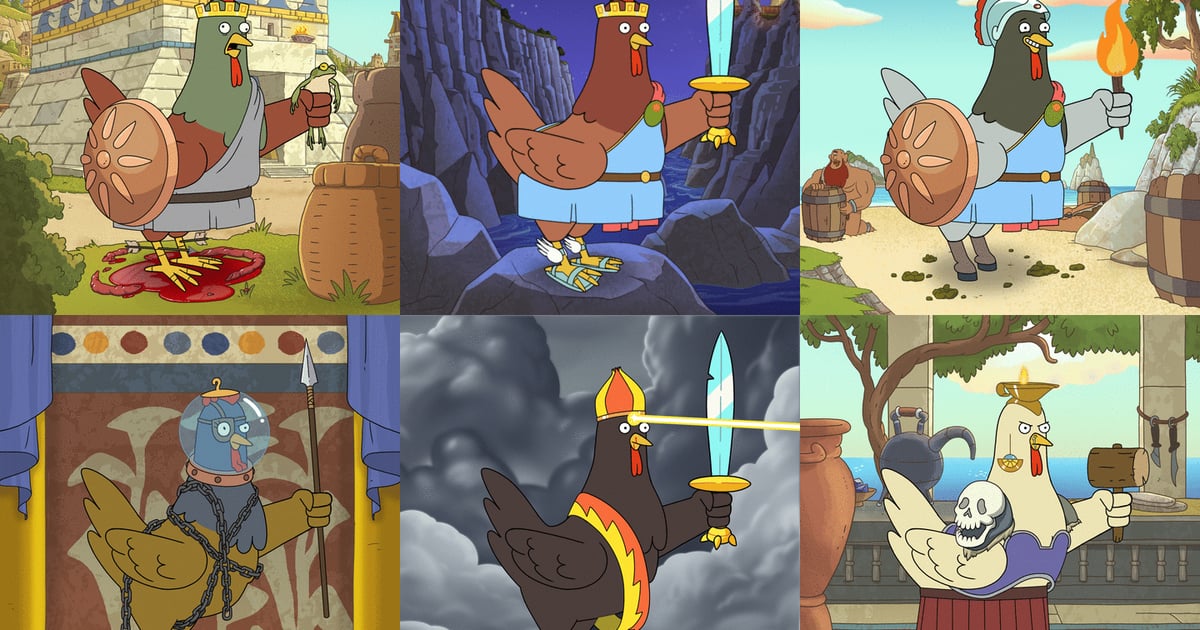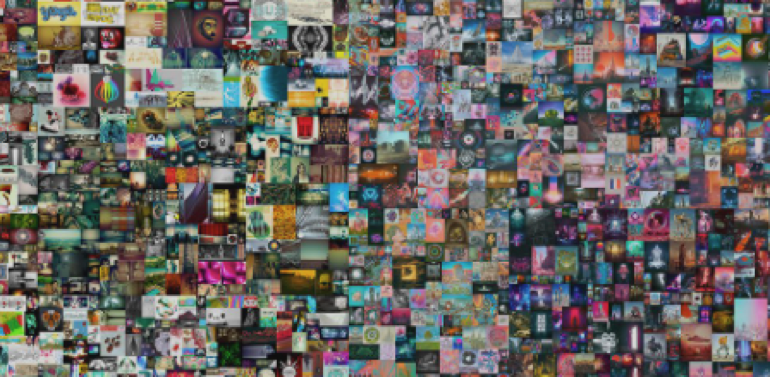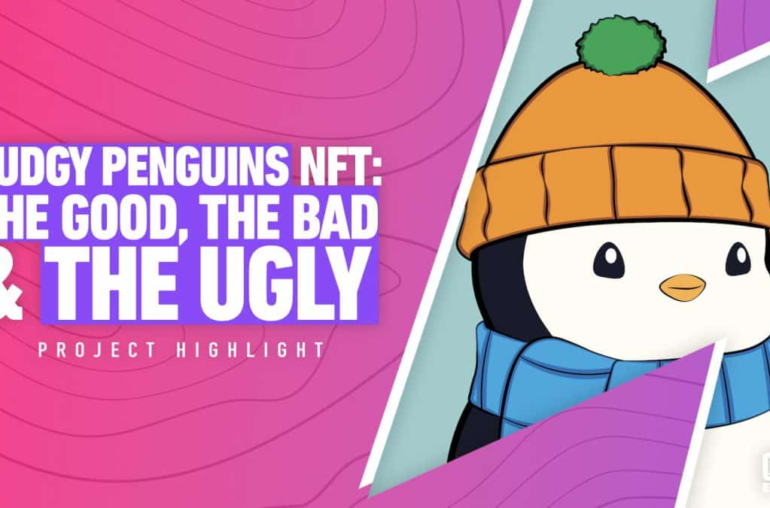Forgot Password?
Once registered, you can:
By registering you agree to our privacy policy, terms & conditions and to receive occasional emails from Ad Age. You may unsubscribe at any time.
Are you a print subscriber? Activate your account.
By Erika Wheless – 12 hours 16 min ago
By Ad Age and Creativity Staff – 14 hours 19 min ago
By Brian Bonilla – 16 hours 26 min ago
16 hours 40 min ago
By Gillian Follett – 16 hours 43 min ago
By Garett Sloane – 2 days 23 hours ago
By Lindsay Rittenhouse – 2 days 23 hours ago
By Adrianne Pasquarelli – 2 days 23 hours ago
By Parker Herren – 22 hours 1 min ago
By Jade Yan – 23 hours 1 min ago
By Brian Bonilla – 16 hours 26 min ago
By Erika Wheless – 12 hours 16 min ago
By Jack Neff – 1 day 22 hours ago
Throughout the year, Ad Age has meticulously cataloged the ways in which brands have used NFTs in their marketing. We’ve seen “edible” NFTs, NFTs paired to clothing, NFTs so popular they congested the blockchain and NFTs so boring they netted zero bidders.
Most brands that jumped on the bandwagon did so only once, and their efforts will be forgotten like footprints on the sands of time. But a select few marketers showed real commitment to the NFT space, bringing creativity and a sense of longevity to their activations.
The jury is out on how—or whether—NFT marketing will be used in 2023, but in 2022, there were clear stories of success. Here are the top five brands to activate the NFT space this year.
How could we make a list of top brands in the NFT space without including a luxury retailer? Luxe fashion has been one of the most active categories to experiment in Web3, with brands from Gucci to Tiffany & Co. to Balmain each deploying their own blockchain-based efforts. And in 2022, Prada was the luxury NFT champion.
At the start of the year, the Italian fashion house teamed with Adidas to launch an interactive art project that would be minted as an NFT. Soon after, it launched its first independent effort—an ongoing series tied to its Timecapsule program. Timecapsule releases a batch of one exclusive piece of clothing every month, for which consumers have 24 hours to purchase. Starting in June, Prada paired this physical item with a corresponding NFT featuring a unique serial number and relevant imagery. Owners are also granted special benefits and experiences.
While the token comes as a free add-on, the item itself is not cheap, typically costing well over $1,000. But Prada has opened up its NFT interests to everyone through a public Discord server called “Prada Crypted,” where users can chat about Web3 and connect with like-minded fashion enthusiasts. The server currently has just under 7,000 members.
When Reddit announced in July that it was launching a storefront for blockchain-backed characters, this reporter’s honest reaction was, “Get in line.” How many other companies had we seen roll out NFT marketplaces in the past year? Five? Ten? But just three months later, Reddit’s chief product officer said the new platform had onboarded 2.5 million crypto wallets. Clearly, it had done something right.
The key was in how it marketed the platform, never actually using the letters “NFT” but instead branding its tokens as “collectible avatars.” The name is simple and conveys precisely the purpose of the assets: To be collected and shown off as one’s identity on Reddit. By avoiding “NFT,” the company avoids any negative baggage associated with the term, as well as causing confusion over its technical meaning.
“We made the decision to make [the experience] more approachable,” Neal Hubman, Reddit’s global head of client solutions, told Ad Age in November. “It’s really about what [the assets] can offer more so than all of the jargon and back-end technology that gets thrown around.”
Going into 2023, Reddit will aim to onboard more users through new drops and utility. Whether it can sustain its success is unclear given the declining health of the NFT and crypto markets, but a solid start is more than can be said for most newly launched marketplaces.
Fox Entertainment, through its Web3 studio Blockchain Creative Labs, has spent 2022 preparing audiences for its NFT-based TV show, “Krapopolis.” The animated series is created by Dan Harmon, co-creator of fan-favorite “Rick and Morty,” and has been billed as the first show to be curated using blockchain technology.
Look back: A guide to the ‘Rick & Morty’ marketing multiverse (from 2021)
While season one of “Krapopolis” isn’t set to premiere until May 2023, Fox has been aggressively marketing the show behind its NFT value prop. The media company has teased the novelty of the model at events such as the Upfronts, espousing NFTs for their potential to create new pathways of fan engagement. To audiences, Fox has pushed the technology as a means of content distribution, using social channels including Twitter to show how holders could actually own moments from the series.
In August, Fox dropped the first collection of “Krapopolis” NFTs—“Krap Chickens,” a set of 10,420 tokens that grant access to events and private screenings, meet-and-greets, merchandise and—most interestingly—voting rights over aspects of the show. This latter detail saw its first application for a special presentation of the pilot episode just after Thanksgiving, for which token holders were allowed to vote on which character would be eaten by a kraken.
Outside of “Krapopolis,” Fox and Blockchain Creative Labs have enabled Web3 technology for brands like WWE and “The Masked Singer.” Each have their own NFT marketplaces and aim to bring blockchain to the masses in a way that doesn’t feel overly technical.
Adidas hinted that it would dial up its NFT efforts in 2022 when it dropped its first collection at the doorstep of the new year. The “Into the Metaverse” NFTs featured 30,000 tokens and netted over $22 million in a span of hours. While the mint wasn’t perfect, causing a “gas war”—or network congestion—that skyrocketed transaction fees, it was enough to spark interest for the brand to leverage over the following months.
As part of the initial drop, Adidas bought a Bored Ape, named it Indigo Herz and used the character as a kind of mascot for its Web3 ambitions (the Ape even has its own Twitter account with nearly 20,000 followers). As previously mentioned, the following month Adidas teamed with Prada to launch an interactive art NFT; the project returned partial proceeds to Adidas’ token holders.
The brand in June partnered with Crawley Town FC, a professional English soccer team owned by a Web3 brand, to design its jersey with a “Chromie Squiggle.” The Squiggle, designed by artist Snowfro, is one of the most prized collections of NFTs ever made, representing an early example of NFT-backed generative art.
Most recently, Adidas launched its first collection of NFT wearables, “Virtual Gear,” that is intended to be interoperable across metaverse platforms. The brand hosted a party at Art Basel Miami Beach to celebrate the rollout, inviting only holders of its NFTs. It also released a styling tool that allows “Virtual Gear” holders to redesign their profile-picture NFTs.
Bud Light Next has attempted to align itself with the NFT world ever since the zero-carb beer launched in February. In the weeks leading up to its rollout, the brand dropped its eponymous NFT collection—a series of 12,722 tokens. For $400 a pop, buyers could earn the right to vote on merchandise ideas and access events, as well as other, undisclosed perks that every brand seems to tease with their projects.
But unlike other brands, Bud Light Next didn’t lose interest. The brewer was gifted a prestigious Noun NFT—at the time costing $394,000—in exchange for featuring Noun imagery in its Super Bowl commercial. A couple of months later, Bud Light Next held an in-person event called “NFT Beerfest” for its token holders, and offered limited-edition cans with Noun-inspired packaging.
Perhaps most indicative of Bud Light Next’s commitment to the space is its regular contribution as a voter in Nouns’ organizing body, Nouns DAO. At the time of writing, the brand has voted in more than three-quarters of the proposals brought to the DAO since it entered the group—over 100 in total. Before casting its vote, the brewer passes along the proposal to its community of Bud Light Next NFT holders, who determine the way in which the brand will vote in the actual DAO.
In this article:
Asa Hiken is a technology reporter for Ad Age covering the intersection of Web3 and marketing, including crypto, NFTs and the metaverse.



